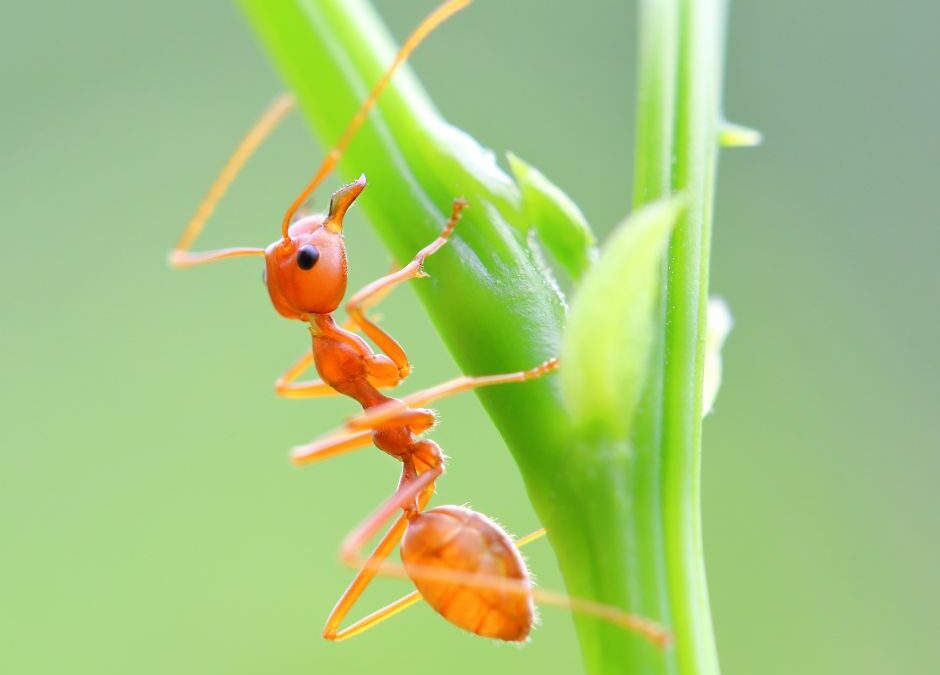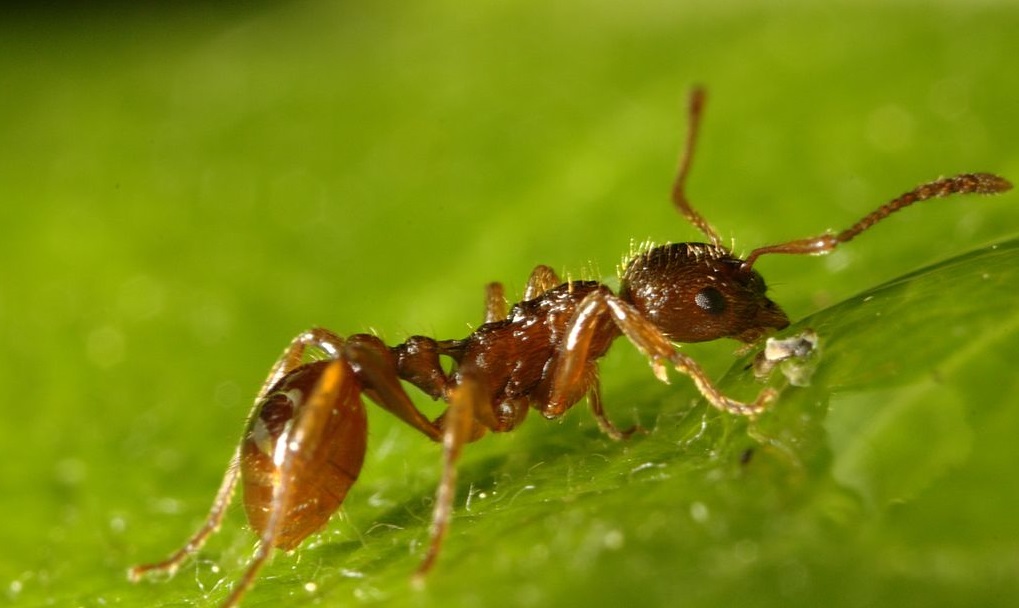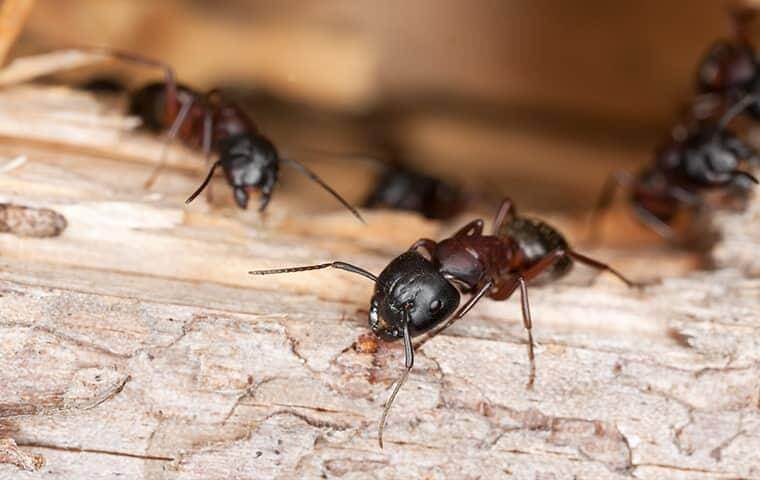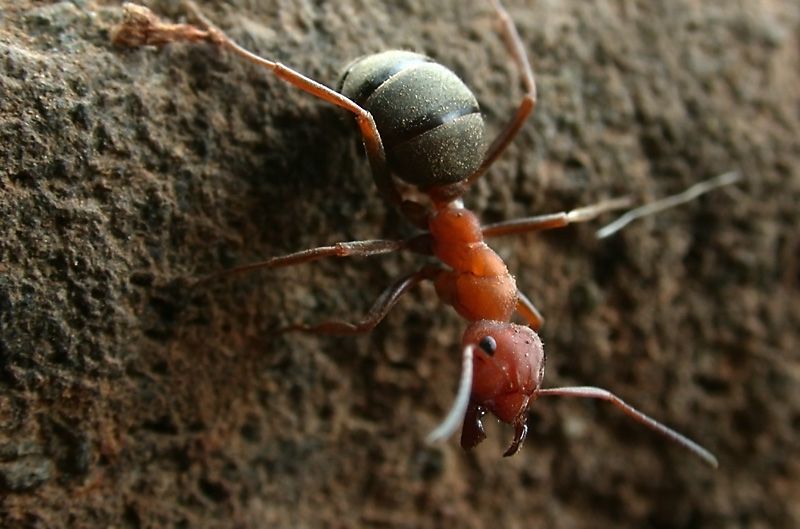Minnesota is home to a diverse array of ant species, with over 100 different types of ants residing in the state. As summer approaches, several of these ant species are set to emerge, each with its own unique characteristics and behaviors. Understanding the types of ants that may be present in your area can help you identify and manage any potential pest problems more effectively.
In this article, we will explore some of the most common and intriguing ant species found in Minnesota, including their nesting habits, food preferences, and potential impact on the ecosystem.
You are reading: 6 Types Of Ants Set To Emerge In Minnesota This Summer
Whether you’re a nature enthusiast or simply interested in learning more about the world around you, discovering the types of ants set to emerge in Minnesota this summer is sure to be an enlightening experience.

6 Types Of Ants Set To Emerge In Minnesota This Summer
European fire ant

The European fire ant, also known as the European red ant, is an invasive species in Minnesota that is considered a pest. These ants are very small, measuring only 3/16th of an inch long, and are red in color. They are known for their aggressive behavior and can sting repeatedly, causing a temporary, painful, burning sensation.
European fire ants form large colonies and create mounds in open areas, making them easy to spot. Their nests are cryptic and difficult to detect, and people who unknowingly disturb the nest can quickly be swarmed and stung by ants protecting their nests.
When European fire ants move into new areas, they completely displace native ants and negatively impact other insects. As sugar-loving ants, they also forage on flowers and extrafloral nectaries and can disrupt local pollinators. Preventing infestations of European fire ants is the best way to control them.
Thief ants

Thief ants, also known as grease ants or sugar ants, are one of the smallest household ants, measuring only 1 to 2 millimeters in length. They are yellow to dark brown in color and are often confused with pharaoh ants.
These ants get their name from their habit of nesting very close to, or even sometimes within, other ants’ colonies, from which they steal food and eggs. Thief ants are known for their trailing behavior, with worker ants traveling far distances for food and establishing scent trails to that food.
Thief ants have a preference for greasy and sweet foods, which is why they are often found in kitchens and pantries. They are not particularly fond of sweet substances, which can create challenges in getting rid of them.
These ants can nest both outdoors and indoors, as long as they are close to other established ant colonies. Outdoor nests may be under rocks, around foundations, bare soil, or decaying wood, while indoor nests can be found in small cracks, behind baseboards, in wall voids, beneath floors, and in cupboards.
While thief ants do not bite humans, they have small stingers that are rarely used effectively. They are not attracted to many ant baits because their primary food source is from other ant colonies. Controlling thief ant infestations can be challenging due to their small colonies and nesting habits.
Carpenter ants

Carpenter ants are a common type of ant found in Minnesota. They are large ants, ranging from 1/4 to 1/2 inch in size, and are usually blackish in color.
Carpenter ants build their nests inside wood, consisting of galleries chewed out with their mandibles or jaws, preferably in dead, damp wood. They do not eat the wood but excavate it to make their nests.
Carpenter ants can potentially damage homes and other wooden structures, and the best method for controlling them is to deliver insecticide into their nest.
Carpenter ants are considered both predators and scavengers, and they typically eat parts of other dead insects or substances derived from other insects. They also feed on sweets, eggs, meats, cakes, and grease.
Carpenter ants can be identified by the general presence of one upward protruding node, looking like a spike, at the “waist” attachment between the thorax and abdomen (petiole). Carpenter ants can be mistaken for other ants, so correct identification is important for control strategies to work effectively.
Cornfield ants
Cornfield ants, also known as Lasius alienus, are small to medium-sized ants that are light to dark brown in color. They are a species of ant in the subfamily Formicinae (family Formicidae).
Workers of the species have a length of about 2-4 mm, while queens are larger, measuring 7-9 mm. Cornfield ants are abundant outdoors and are often found in cornfields, lawns, and other open areas.
Contrary to their name, cornfield ants do not exclusively reside in cornfields. They are called cornfield ants because of their habit of fostering the corn root aphid and transferring it from grasses to growing corn.
These ants are considered pests of golf courses and lawns due to their nesting habits in open areas.
Cornfield ants are similar in appearance to field or carpenter ants, but they can be distinguished by the absence of noticeable ocelli between their compound eyes and a distinct dip in the top of their thorax. They are not known to cause significant damage to structures like carpenter ants do, but their presence can be a nuisance in outdoor areas.
Field ants

Field ants, also known as wood ants or mound ants, are a group of ants from the Formica genus that inhabit grasslands, parks, gardens, and lawns. They are medium to large ants, ranging in size from 1/5 to 3/8 inches in length, and can come in various colors, including pale yellowish, reddish-brown, black, or a combination. Field ants are often mistaken for carpenter ants due to their physical appearance.
These ants are primarily outdoor insects, building nests in the ground near trees, rocks, sidewalks, fences, and the foundations of buildings. They create mounds of plant materials, such as grass, twigs, leaves, and pine needles, which can be unsightly and interfere with lawn maintenance.
Read more : Top 10 Amazing White Animals
Some species of field ants can even inject formic acid into the roots of plants, causing damage or death to herbaceous and woody ornamentals.
Field ants primarily feed on honeydew, a substance produced by plant-sucking insects like aphids, mealybugs, and scale insects found on trees and shrubs. They also eat other insects and can be attracted to meats, making them scavengers.
While they do not nest in homes, field ants may enter households and structures when swarming or searching for food, particularly sweets. They can become a nuisance in late summer and fall when the winged ants swarm out of their colonies.
In terms of human health, field ants pose a greater threat to landscaping than to people. They are generally docile but can bite and spray formic acid when disturbed, resulting in a painful experience.
If bitten or stung by ants, it is advisable to seek the advice and assistance of a physician. To control field ants, it is recommended to focus on eliminating their food sources, sealing entry points, and maintaining a well-shaded and clean landscape. If an infestation persists, it is best to contact a pest control professional for effective ant control.
Thatching ants
Thatching ants, also known as western thatching ants or Formica obscuripes, are a species of ant native to North America. They are a dominant component in many habitats across much of western North America.
Thatching ants produce large mounds covered by small pieces of plant material, which can be as high as 18 inches (45 cm) and extend down to 4 ft (1.2 m) in the ground.
The number of adult workers per colony may be as high as 40,000. Thatching ants feed upon a number of insect species, consume nectar from homopterous insects they tend, and occasionally eat plant tissue.
Thatching ants are known for their aggressive behavior, and they can deliver a very painful bite with their powerful jaws. Their bite includes a spray of formic acid, which can cause a burning sensation.
Thatching ants are often confused with carpenter ants due to their similar size and color. However, thatching ants can be distinguished by their thatched mounds and the absence of galleries in wood.
Thatching ants are not considered pests, but their presence can be a nuisance in outdoor areas. They are generally docile and do not pose a threat to human health. If an infestation of thatching ants is causing concern, it is best to contact a pest control professional for effective ant control.
FAQS
1. What are the most common types of ants found in Minnesota?
There are over 100 species of ants found in Minnesota, but some of the most common types include carpenter ants, field ants, cornfield ants, and thief ants.
2. Are ants harmful to humans?
Most ants are not harmful to humans, but some species can deliver painful bites or stings, such as thatching ants and European fire ants. Carpenter ants can also cause damage to wooden structures.
3. How can I identify different types of ants?
Ants can be identified by their size, color, body shape, antennae, and nesting behavior. It is important to correctly identify the species of ant to determine the best way to manage them.
4. How can I prevent ant infestations in my home?
To prevent ant infestations, it is important to keep your home clean and free of food debris, seal entry points, and eliminate moisture sources. If an infestation persists, it is best to contact a pest control professional for effective ant control.
5. Are thatching ants harmful to the environment?
Thatching ants are not considered pests and do not pose a threat to human health. However, their
presence can be a nuisance in outdoor areas, and they can deliver a painful bite with their powerful jaws.
Source: https://petstutorial.com
Category: Animals










